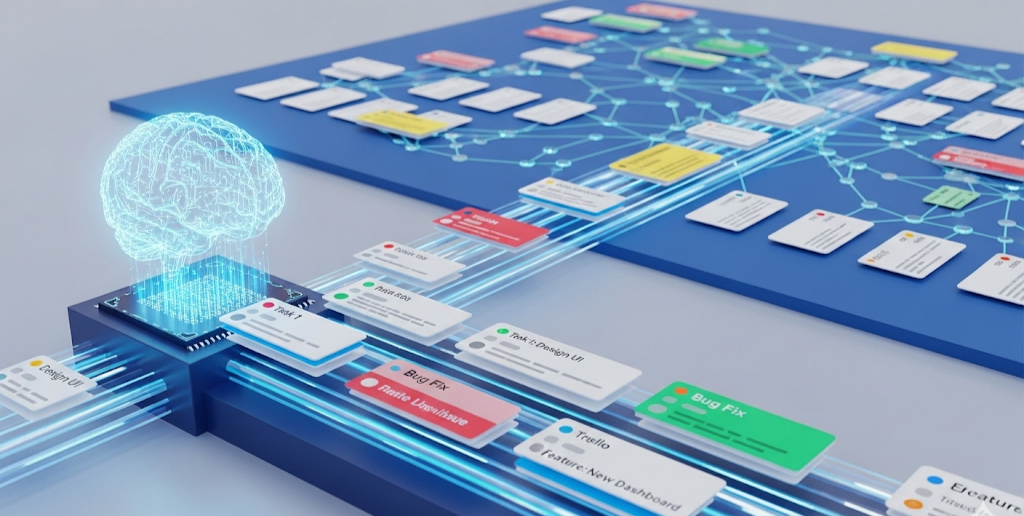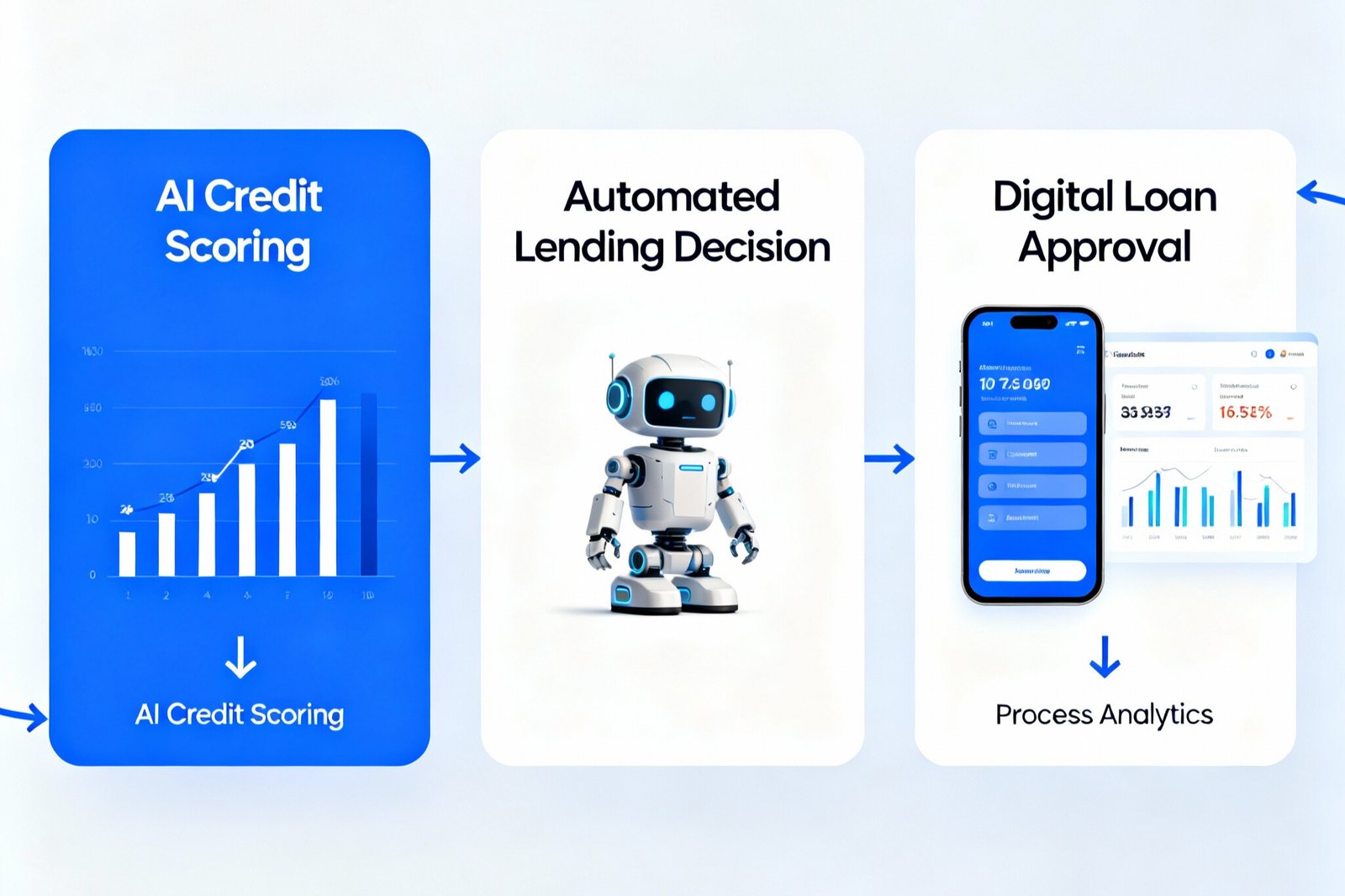Managing projects efficiently requires smart automation, and learning how to use AI to create Trello cards can transform your productivity workflow. With artificial intelligence revolutionizing project management, you can now automate card creation, reduce manual work, and ensure nothing falls through the cracks. This comprehensive guide explores every method available to leverage AI for Trello card creation, from built-in features to advanced integrations.
What is AI-Powered Trello Card Creation?
AI-powered Trello card creation refers to using artificial intelligence tools and automation to generate, populate, and organize Trello cards without manual input. Instead of spending time manually creating each task card, AI can analyze your requirements, extract information from various sources, and automatically generate structured cards with relevant details, descriptions, and proper placement.
This technology leverages machine learning algorithms, natural language processing, and API integrations to streamline project management workflows. Whether you’re managing customer support tickets, content calendars, or complex project timelines, AI can create cards instantly based on predefined triggers or real-time data.
Native AI Features in Trello
Atlassian Intelligence Integration
Trello now includes built-in AI capabilities through Atlassian Intelligence, making it easier than ever to use AI to create Trello cards. You can access these features by clicking the blue Atlassian Intelligence button or typing /ai when editing cards.
Key features include:
-
Smart content generation for card descriptions
-
Automatic task breakdown from high-level goals
-
Intelligent text refinement and suggestions
-
Context-aware recommendations based on board history
AI-Enhanced Card Creation Process
When you create a new card using Trello’s native AI, the system can automatically:
-
Generate detailed descriptions from brief titles
-
Suggest relevant labels and categories
-
Recommend due dates based on project timelines
-
Create checklists and subtasks intelligently
AI-Powered Power-Ups for Trello
AutoPlan Power-Up
The AutoPlan Power-Up represents one of the most sophisticated ways to use AI to create Trello cards automatically. This advanced tool uses machine learning algorithms to:
-
Analyze project goals and break them into actionable tasks
-
Generate comprehensive task lists with detailed descriptions
-
Create cards automatically based on project requirements
-
Optimize task sequencing for maximum efficiency
AI Project Planner Power-Up
The AI Project Planner Power-Up takes automation further by providing :
-
Intelligent roadmap generation from project objectives
-
Automated timeline creation with realistic deadlines
-
Resource allocation suggestions based on team capacity
-
Risk assessment integration for proactive planning
Third-Party AI Integration Tools
Relevance AI Template System
Relevance AI offers powerful templates that make it simple to use AI to create Trello cards programmatically. Their system provides:
Step-by-Step Implementation:
-
Authentication Setup – Generate API keys and tokens
-
Board Preparation – Identify target boards and lists
-
Card Configuration – Define titles, descriptions, and positioning
-
Automated Execution – Process requests and verify creation
The platform excels at:
-
Streamlined workflow integration with existing business processes
-
Position parameter control for organized list management
-
Output customization through simple response formatting
-
Bulk card creation for large-scale project initialization
Beam.ai AI Agent Integration
Beam.ai provides sophisticated AI agent capabilities for Trello card creation. Their platform enables:
-
Email-to-card conversion automatically
-
Form submission processing into structured tasks
-
Multi-source data aggregation for comprehensive cards
-
Real-time trigger responses for immediate task creation
Zapier AI-Powered Automations
Zapier integrations offer numerous ways to use AI to create Trello cards from various sources :
Popular Integration Examples:
-
Meeting notes automation – Create cards from AI meeting summaries
-
Customer support integration – Generate cards from support tickets
-
Email processing – Convert important emails into actionable tasks
-
Document analysis – Extract tasks from PDF and Word files
Step-by-Step Guide to Use AI to Create Trello Cards
Method 1: Using Native Atlassian AI
-
Open your Trello board and navigate to the desired list
-
Click “Add a card” or use the quick-add shortcut
-
Type
/aiin the card title or description field -
Provide context about your task or project goal
-
Review AI-generated content and make necessary adjustments
-
Save the card with AI-enhanced details
Method 2: Setting Up Relevance AI Integration
-
Create a Relevance AI account and access Trello templates
-
Generate API credentials from Trello Developer Portal
-
Configure board and list parameters for target locations
-
Set up card creation templates with required fields
-
Test the integration with sample data
-
Deploy automated workflows for ongoing card creation
Method 3: Implementing Zapier Automation
-
Connect Trello account to Zapier platform
-
Choose trigger sources (email, forms, other apps)
-
Configure AI processing rules for content analysis
-
Map data fields to Trello card properties
-
Set up filtering criteria to avoid duplicate cards
-
Activate automation and monitor performance
Advanced AI Automation Strategies
Multi-Source Data Aggregation
Advanced users can combine multiple AI services to create comprehensive Trello cards :
Customer Support Workflow:
-
AI chatbot interactions → Ticket analysis → Trello card creation
-
Sentiment analysis integration → Priority assignment → Urgent task flagging
-
Historical data processing → Pattern recognition → Proactive task generation
Content Management Pipeline:
-
AI content calendar → Editorial task creation → Team assignment automation
-
SEO analysis integration → Keyword-based task generation → Performance tracking cards
-
Social media monitoring → Trend-based content cards → Publishing schedule automation
Intelligent Card Enhancement
Beyond basic creation, AI can enhance cards with :
-
Smart labeling based on content analysis
-
Automatic member assignment using workload algorithms
-
Due date optimization considering team availability
-
Checklist generation from task complexity analysis
Benefits of Using AI for Trello Card Creation
Time Efficiency and Productivity Gains
Organizations using AI to create Trello cards report significant productivity improvements :
-
75% reduction in manual card creation time
-
90% fewer missed tasks through automated capture
-
50% faster project setup with AI-generated templates
-
Consistent formatting across all team projects
Enhanced Accuracy and Completeness
AI-powered card creation ensures:
-
Standardized information across all project cards
-
Complete task descriptions with relevant context
-
Proper categorization and labeling consistency
-
Reduced human error in task documentation
Scalability for Growing Teams
As teams expand, AI automation becomes increasingly valuable:
-
Handle increased workload without proportional time investment
-
Maintain quality standards regardless of team size
-
Onboard new members faster with consistent processes
-
Support multiple projects simultaneously without confusion
Real-World Use Cases and Examples
Customer Support Team Success Story
A mid-sized software company implemented AI-powered Trello card creation for their customer support workflow :
Implementation:
-
Connected customer support emails to AI processing system
-
Configured automatic card creation based on issue severity
-
Integrated customer information and ticket history
-
Set up escalation triggers for urgent issues
Results:
-
Response time decreased by 40% through faster task visibility
-
Customer satisfaction improved due to better issue tracking
-
Team workload distribution became more balanced
-
Issue resolution patterns emerged through better data collection
Content Marketing Automation
A digital marketing agency uses AI to create Trello cards for content planning :
Workflow:
-
AI analyzes trending topics and competitor content
-
Automatically generates content idea cards with SEO keywords
-
Creates editorial calendars with optimal publishing schedules
-
Assigns tasks based on team member expertise
Benefits:
-
Content output increased by 60% with same team size
-
SEO performance improved through data-driven topic selection
-
Team coordination enhanced with clear task visibility
-
Client deliverables tracked more effectively
Project Management Excellence
A construction company revolutionized their project management by using AI to create Trello cards from project documents :
Process:
-
AI extracts key information from project blueprints and contracts
-
Automatically creates task cards for each project phase
-
Generates resource allocation cards with material requirements
-
Creates timeline cards with dependency tracking
Outcomes:
-
Project completion time reduced by 25%
-
Resource waste minimized through better planning
-
Communication gaps eliminated with comprehensive task documentation
-
Client satisfaction increased due to better project visibility
Best Practices for AI-Powered Trello Card Creation
Optimization Strategies
To maximize the effectiveness of AI card creation:
Content Quality:
-
Provide clear, detailed prompts to AI systems
-
Review and refine AI-generated content regularly
-
Establish templates for consistent card formatting
-
Train AI models with your specific terminology and processes
Workflow Integration:
-
Start with simple automations before implementing complex workflows
-
Test AI-generated cards thoroughly before full deployment
-
Create backup processes for critical task creation
-
Monitor automation performance and adjust as needed
Common Pitfalls to Avoid
Over-automation Risks:
-
Don’t automate every aspect of card creation initially
-
Maintain human oversight for critical project decisions
-
Regularly audit AI-generated content for accuracy
-
Preserve flexibility for unique or unusual tasks
Technical Considerations:
-
Ensure robust API authentication and security measures
-
Plan for system downtime and backup processes
-
Document all automation workflows for team reference
-
Regular testing of integrations to prevent failures
AI technology continues to evolve rapidly, and several trends will shape how teams use AI to create Trello cards:
Enhanced Natural Language Processing:
-
Voice-to-card creation capabilities
-
Multi-language support for global teams
-
Context-aware task interpretation
-
Emotional intelligence in task prioritization
Advanced Integration Capabilities:
-
Seamless connection with enterprise software
-
Real-time collaboration across platforms
-
Predictive analytics for project success
-
IoT device integration for automatic task triggers
Conclusion
Learning how to use AI to create Trello cards represents a significant opportunity to streamline project management and boost team productivity. From Trello’s native Atlassian Intelligence features to sophisticated third-party integrations like Relevance AI and Zapier automations, multiple options exist to automate card creation effectively.
The key to success lies in starting with simple implementations, gradually expanding automation capabilities, and maintaining quality oversight throughout the process. Whether you’re managing customer support tickets, content calendars, or complex project timelines, AI-powered card creation can reduce manual work by up to 75% while improving accuracy and consistency.
As AI technology continues advancing, teams that adopt these automation strategies now will be best positioned to leverage even more powerful capabilities in the future. Start with one method that matches your current needs, test thoroughly, and expand your AI-powered Trello workflow as your confidence and expertise grow.
FAQs
Q1: Is it free to use AI to create Trello cards?
A: Trello’s native AI features through Atlassian Intelligence are included with paid Trello plans. Third-party tools like Relevance AI and Zapier offer both free tiers and paid plans depending on usage volume. Most basic automation can start free or at low cost.
Q2: How accurate is AI-generated content for Trello cards?
A: AI-generated cards typically achieve 85-95% accuracy when properly configured. The accuracy depends on the quality of input data, prompt clarity, and specific AI model used. Always review AI-generated content before finalizing important project cards.
Q3: Can AI create cards in multiple Trello boards simultaneously?
A: Yes, advanced AI tools like Relevance AI and Zapier can create cards across multiple boards and lists simultaneously. This capability is particularly useful for cross-project coordination and team management scenarios.
Q4: What happens if the AI creates incorrect or duplicate cards?
A: Most AI automation tools include filtering and deduplication features to prevent duplicate cards. Additionally, you can set up approval workflows where AI-generated cards require human review before final creation. Regular monitoring and adjustment of automation rules help minimize errors.
Q5: Do I need programming knowledge to set up AI card creation?
A: No programming knowledge is required for basic implementations. Tools like Zapier and Trello’s native AI features use visual, no-code interfaces. However, advanced customizations using APIs may benefit from technical knowledge.








Leave a Reply